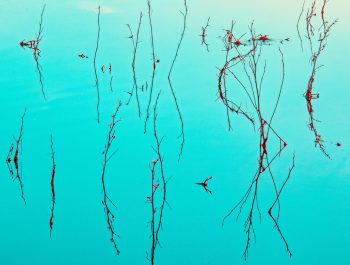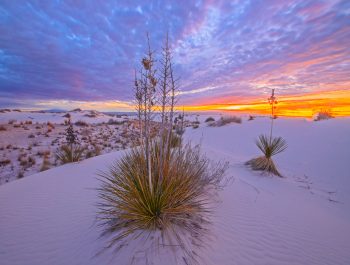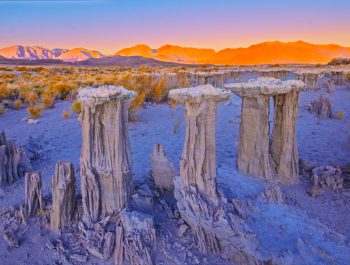The Language of Art Part 7: Dialects and Manipulations
Introduction
In my previous essay, we saw how main languages branch out into dialects. We also saw that dialects are languages used by groups of people who express their individuality through language. In this series of essays, I focus on visual art languages. However, this process takes place with all types of languages, whether they are verbal, visual, auditory, or other.
Difference
Dialects differ from main languages to varying degrees. My point here is that these differences can be so extensive that someone fluent in a main language may be unable to understand a dialect of that language. This is due to the evolution of the language from mainstream to specialized. Dialects are specialized. They fit a specific purpose and a specific audience. For this reason, dialects are often incomprehensible to those not familiar with the purpose or the audience of a given dialect.
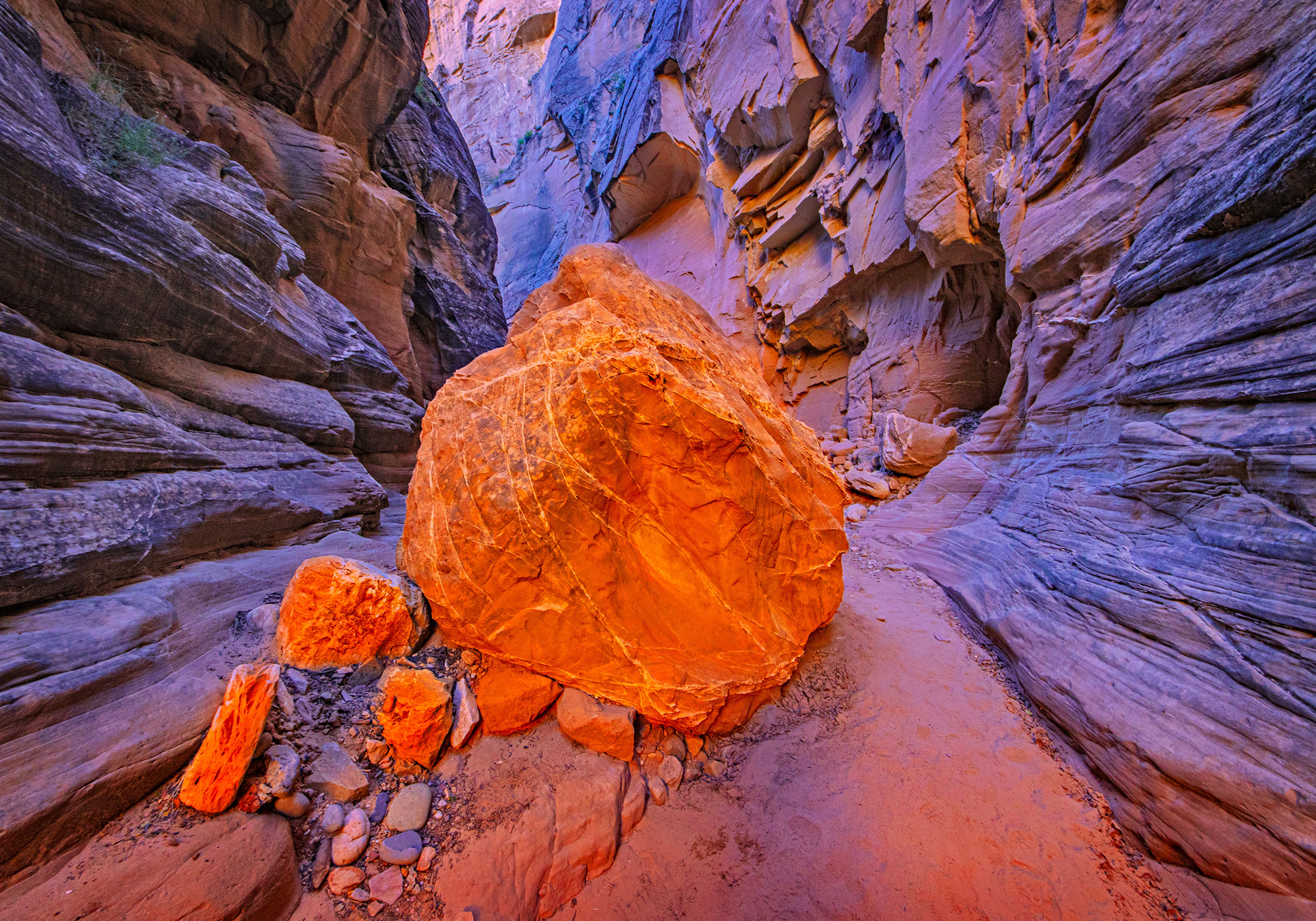
Evolution
There are many examples of the evolution of the main art language into dialects. One example is the emergence of the Abstract Art movement in the mid-20th century, something I will discuss in my next essay. Another is the digital manipulation of photographic images, a phenomenon I address in this essay. I want to talk about this second example now because of the implications it had for the public understanding of photography.
This evolution is the cause of the hotly debated issue of manipulation in digital photography. This issue surfaced because people felt cheated and lied to by photographic images that they believed to be unmanipulated but that were, in fact, digitally altered.
The problem is that the general public’s ability to detect manipulated photographs of real landscapes was, and to a large extent still is, limited. What this means is that the general public is unfamiliar with the language of manipulated photographs and, therefore with the visual dialect of digital manipulation. Basically, most people are not fluent in this language. It is a dialect they do not speak. Therefore, they misunderstand what is being said by those who speak it. Their commentaries are thus best understood as the commentaries of those who do not understand what is being said.
The fact they feel manipulated is similar to people who feel manipulated when listening to a verbal language they do not understand. There is no manipulative intent on the part of the fluent speakers of this language. There is simply a lack of understanding or a complete incomprehension on the part of the listener.
So, what is the actual reason behind the public’s negative reaction to digitally manipulated photographs? Why do people believe they are being lied to? The reason is a misunderstanding about how visual languages work. Audiences that are not-fluent in visual art languages assume that visual languages are automatically decipherable. They believe that because photographs communicate their meaning visually, they have the innate ability to automatically understand their meaning. This is not the case. Visual languages, whatever the medium used, are no more automatically understandable than verbal languages.
However, there is a caveat to this phenomenon. This caveat is the general public’s knowledge of traditional film photography. Before digital capture, photography was done with film and, before that, with various processes using plates coated with sensitive materials. All these processes shared something in common: except through complex processes available only to a few photographers, it was impossible to remove elements or change the shape of objects in a photograph. All that could be done was adjust color and contrast.
This is not to say that manipulated film photographs were not created. Even though doing so was difficult because of the rigidity of the medium, some did try, and some even succeeded. A few names come to mind: Jerry Uelsmann, Duane Michals, and Man Ray, among others. Jerry Uelsmann did it by combining photographs using several enlargers to expose the different parts of the image onto a single piece of paper. Duane Michals did it by using long exposures and superimposing film captures, allowing his subjects to move during the exposure and creating ethereal images. Man Ray did it by not using a camera at all; instead, he placed various objects onto a sheet of photographic paper, exposed it to the light of his enlarger, and developed the image. He called the resulting images Rayisms.
This demonstrates that the film’s photographic medium was manipulable. It also shows that manipulating photographic images was done since the very beginning of photography. The problem was that doing so was difficult. It required research, inventiveness, and the use of specific processes. However, it was possible because a photograph is not reality but a reproduction of reality. This reproduction could be realistic, meaning faithful to the original, or it could be abstract, meaning different from the original.
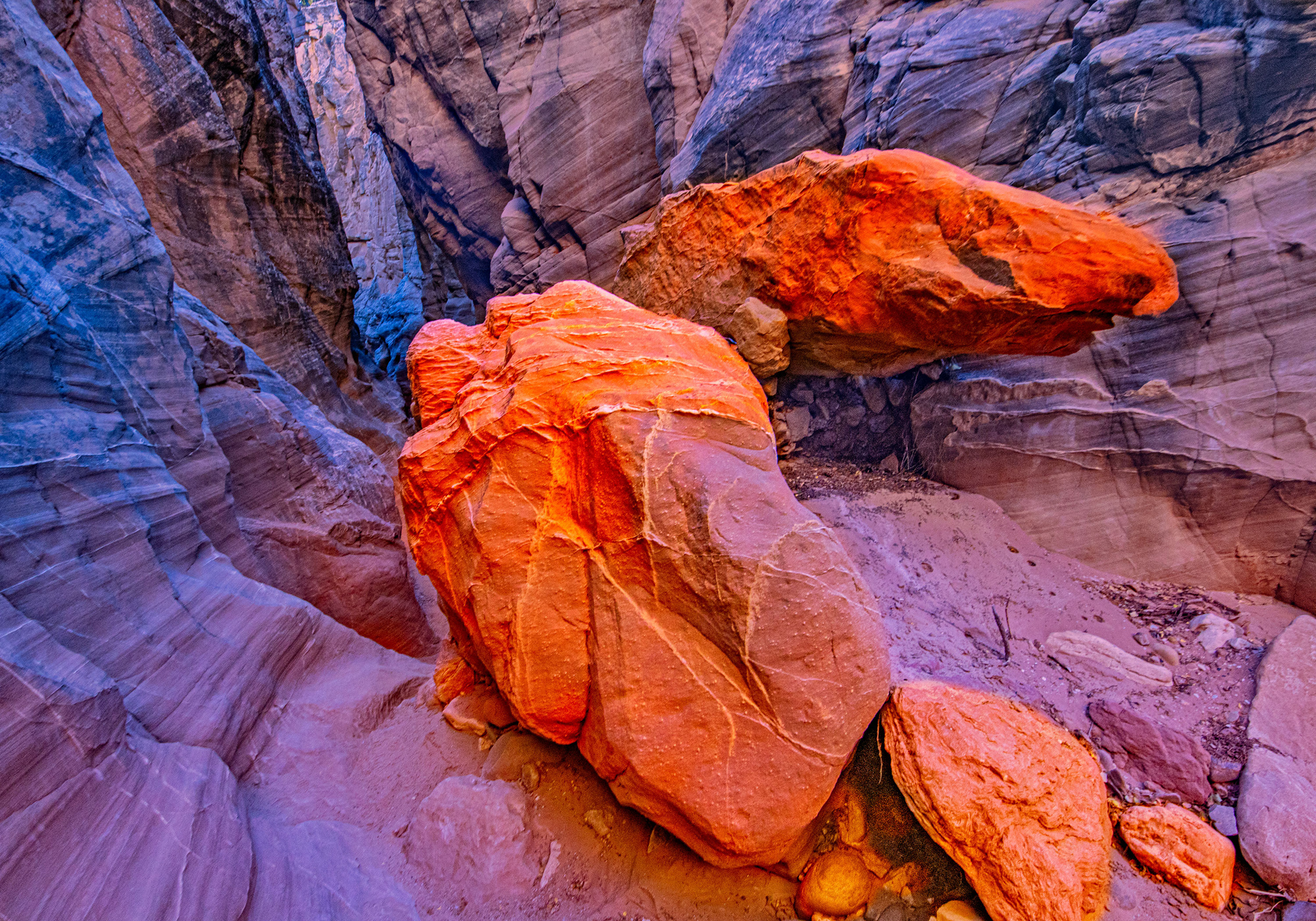
However, the fact that a few artists did manipulate film images was mostly lost on the general public. Only those interested in fine art photography were aware of the work of Jerry Uelsmann or Duane Michals. As for Man Ray, his work was virtually unknown outside of surrealist circles. All in all, their work was unknown to the general public and so was the work of the few other artists who created manipulated film images.
The fact that manipulating film images was difficult and done only by a few photographers means that the vast majority of film photographs were realistic. It also means that the general public got used to believing in the veracity of photographic images. Photographs, of course, were not real. They were flat; the elements in the image were of a different size than the original; they were either black and white, or the colors were different than those of the real world; contrast, color, and density had been adjusted; they showed only a fraction of time while reality goes on forever; most importantly, these photographs reflected not factual information but the emotional response of the artists who created them.
However, despite these obvious differences, the belief that photographs showed something real was accepted by the audience as fact. It was as if, for the public at large, artistic photographs were reportage images and not artistic creations. The same audience watched movie after movie on television and in cinemas, each depicting made-up stories visually and in two dimensions. Yet, somehow, for this audience, a moving picture was seen as fiction, while a static image was seen as fact. This seems incredible, yet it is so.
This phenomenon is best described as habituation. People got used to believing that photographs are real while they are not. However, the possibility of manipulating the content of a photographic image was always there. What was missing was a technology that allowed those who wished to create manipulated images to do so easily. This wish became a reality with the emergence of digital processing. While film processing offered limited opportunities to modify the content of photographic images, digital processing offered unlimited ways to do so. If you could think of it, you could do it. You just needed to learn how to do so.
The fact that artists decided to embrace digital image processing technology and use it to create alternate versions of reality came as a complete surprise to the general public. Being under the habituation that photographs were real, the general public believed that digital photographs were just as real as film photographs. They were not. At least not all of them. This came as a shock to the public, and it generated a wave of resentment, even anger, towards those who used this new technology for creative purposes.
This resentment, while understandable, was unjustified because the digital artists’ goal was not to mislead the public. Their goal was to create a new language, a dialect of the main art language, that allowed them to say what film photography did not allow them to say. However, because this dialect was unknown to the public, their intent was misunderstood by the general public.
This incomprehension is not limited to photography or to the visual arts. Other types of languages, auditory, for example, are similarly non-understandable to those who are not fluent in those languages. Language comprehension requires learning, either formal or cultural. Familiarity is essential to their proper comprehension. Otherwise, the listener is in the same position as someone faced with a spoken language they do not understand.
It is the visual presence of an image, the visual representation of ‘something,’ that lures non-fluent viewers to believe they can understand the meaning of a photograph intuitively. Here, Hermès, the Greek god of communication who acted as a trickster by changing messages before delivering them, is at work messing up communications by changing the meaning of the original message between its origin and its delivery. Regarding manipulated digital photographs, what the public understood was not what the artists were saying. The message the audience deciphered was not the message that was sent to them. People would have been better off saying ‘we don’t understand.’ But somehow this option eludes them. They preferred to believe that they were deciphering a fraud, that they were exposed to a deceitful attempt, and that they were, in short, being duped.
What was, and still is, really happening is that we are presented with a new dialect, a new iteration of the main art language. Such iterations have happened before. However, each time they happen, we are somehow shocked and disturbed because we are being presented with a representation of reality that conflicts and challenges the representation of reality that we have become habituated to see.
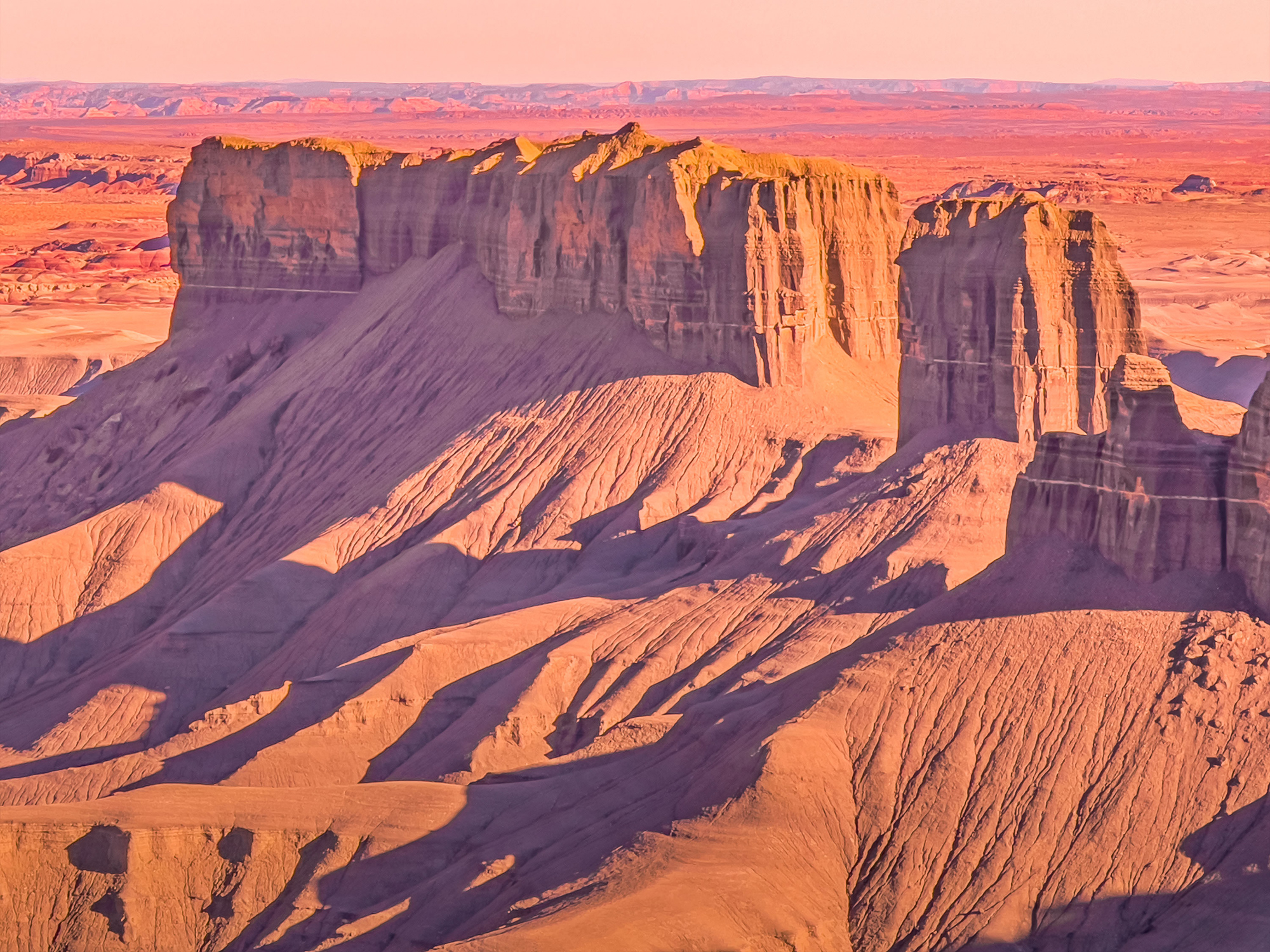
A New Branch In The Language – My Digital Photographic Work
My use of color and form in photography similarly opens a new branch in the language of landscape photography. My definition of myself as an Artist-Photographer is another aspect of this branching out of the language. I am not just an artist or a photographer. I am both. I apply art to photography and photography to art. I transcend boundaries. I create new paradigms. I explore new artistic territories. I speak the universal language of art. I use the vocabulary and the grammar used by artists before me: color, form, composition, facture, and so on. However, I use this language and vocabulary in novel ways. I assemble color, form, composition etc. to say things not said before.
On the one hand, the traditionalists are revolted at what I do because they want to continue saying things the way they were said before digital capture. What I say with the language they have been using upsets them. I say things they do not want to say and perhaps things they do not want to be said at all. The language I use —the branch of language I created — is too raw for them. I use a raw branch of the language. One that they consider ‘crude,’ ‘unpolished’ or ‘unsophisticated’. Not that it is, because it is just as refined, polished, and sophisticated as the language they have been using. It is simply not accepted as such. It has not been ‘washed,’ approved by ‘the powers that be,’ placed on a ‘pedestal,’ sought as the path to ‘photographic success’ or embraced by ‘mainstream landscape photography’ publications (see my essay titled Those who came Before, parts 1 and 2, published in 2021).
On the other hand, cutting-edge artists are delighted because they see me say things they wanted to say but did not have the language to say them until digital came about. I provide a new vocabulary and a new grammar that allows them to say things that matter to them. I provide a new paradigm in which saying these things is not only permitted but also encouraged and rewarded. I create an environment in which using this new branch of the photographic art language is considered refined, polished and sophisticated. An environment in which saying new things, even if they are not universally praised, is more important than saying the same things over and over again for the sake of praise alone.
I offer a path to personal expression as an alternative to the overused path that consists in re-creating the work of those who came before us. Through my essays, such as the one you are reading now, I provide arguments for a successful defense of this approach and of this use of a new branch of the language.
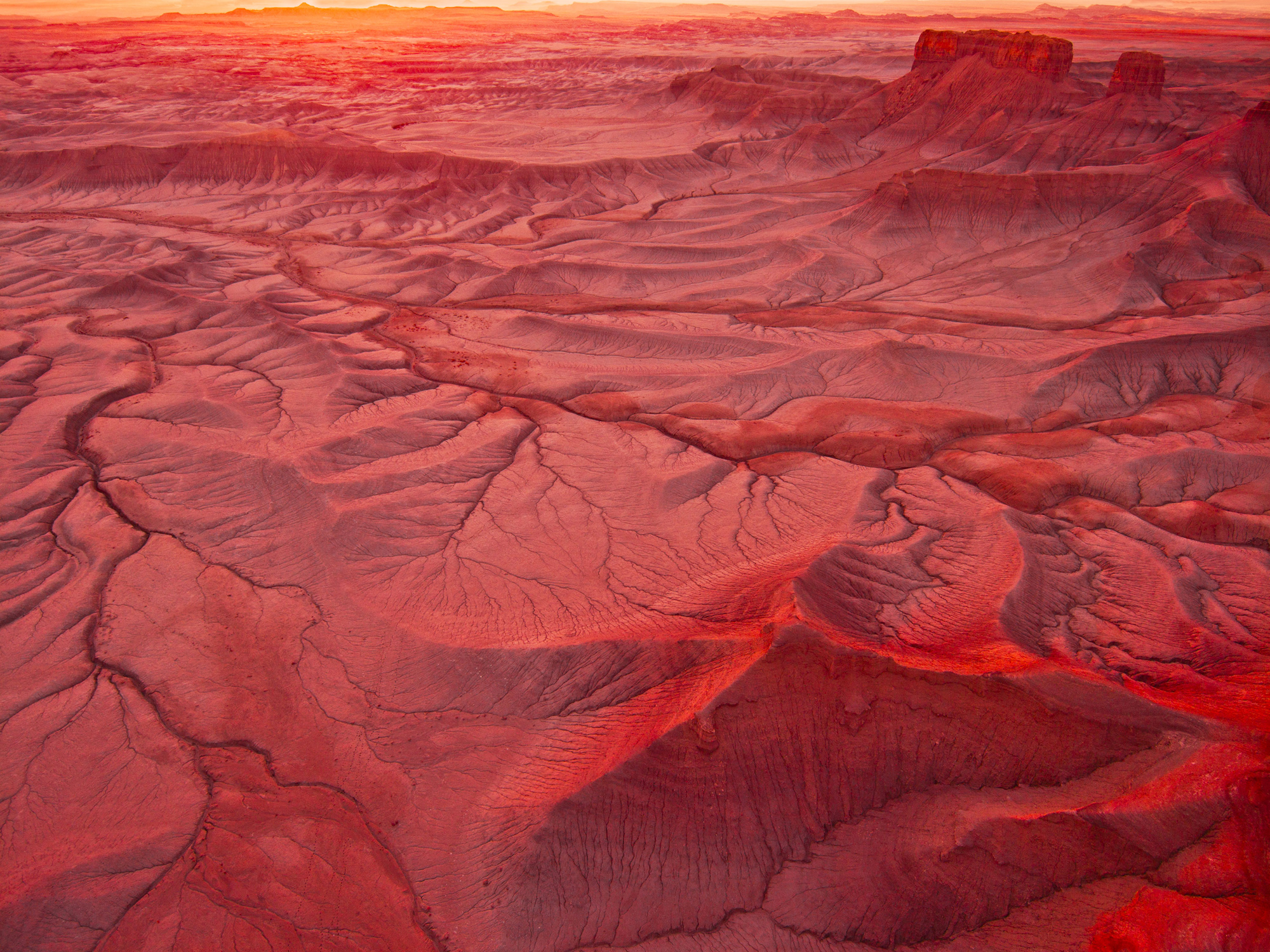
About Alain Briot
I create fine art photographs, teach workshops with Natalie, and offer Mastery Tutorials on composition, image conversion, optimization, printing, business, and marketing. I am the author of Mastering Landscape Photography, Mastering Photographic Composition, Creativity and Personal Style, Marketing Fine Art Photography, and How Photographs are Sold. All four books are available in eBook format on our website at this LINK.
You can find more information about our workshops, photographs, writings, and tutorials and subscribe to our Free Monthly Newsletter on our website. You will receive 40 free eBooks when you subscribe.
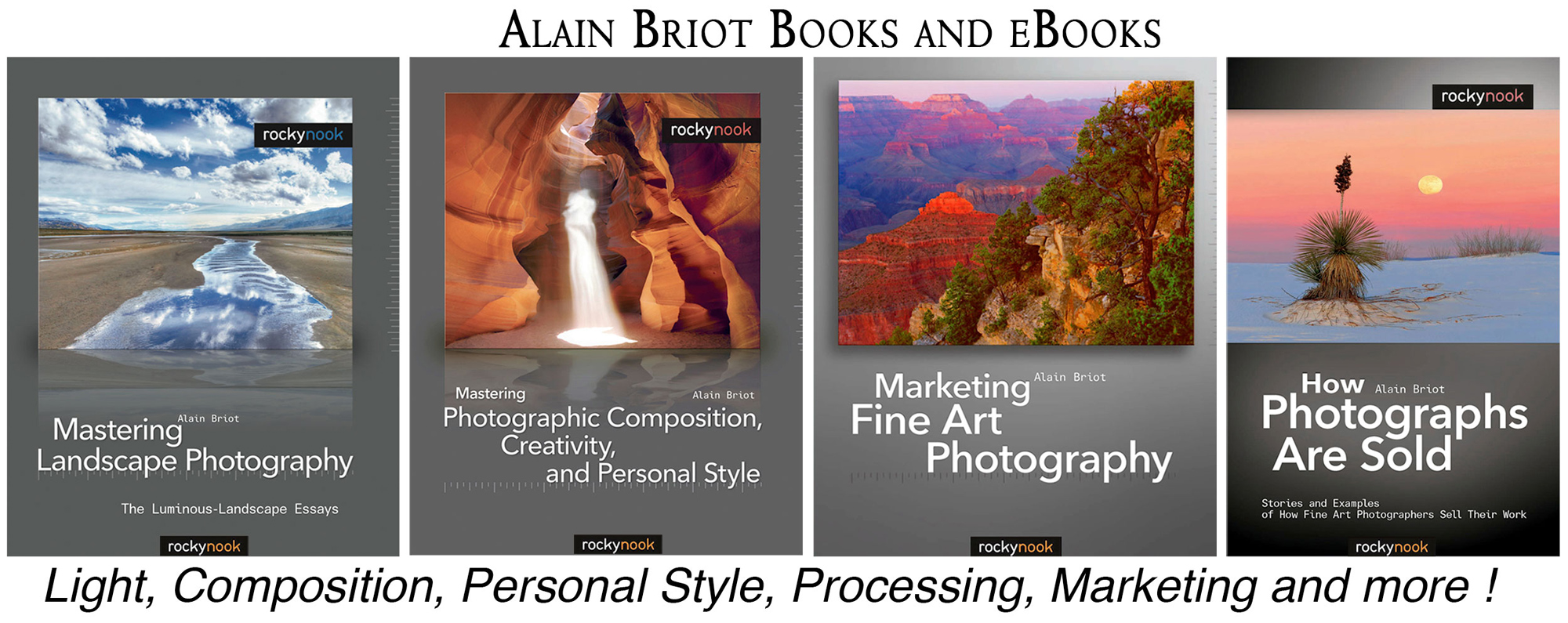
Studying Fine Art Photography With Alain and Natalie Briot
If you enjoyed this essay, you will enjoy attending a workshop with us. I lead workshops with my wife Natalie to the most photogenic locations in the US Southwest. Our workshops focus on the artistic aspects of photography. While we do teach technique, we do so for the purpose of creating artistic photographs. Our goal is to help you create photographs that you will be proud of, and that will be unique to you. The locations we photograph include Navajoland, Antelope Canyon, Monument Valley, Zion, the Grand Canyon and many others. Our workshops listing is available at this LINK.
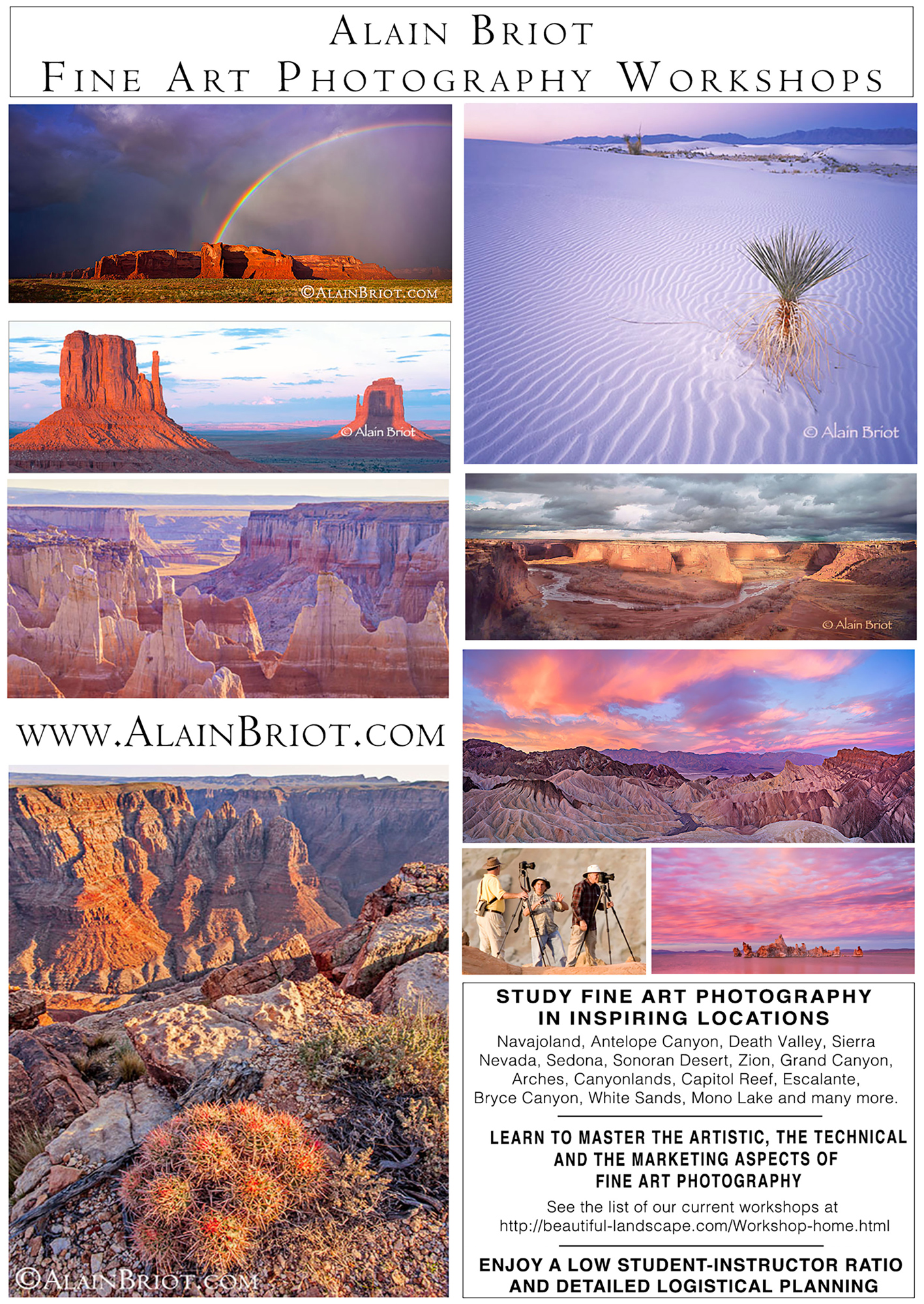
Alain Briot
November 2023
Glendale, Arizona
Author of Mastering Landscape Photography,Mastering Composition, Creativity and Personal Style, Marketing Fine Art Photography, and How Photographs are Sold. http://www.beautiful-landscape.com [email protected]





